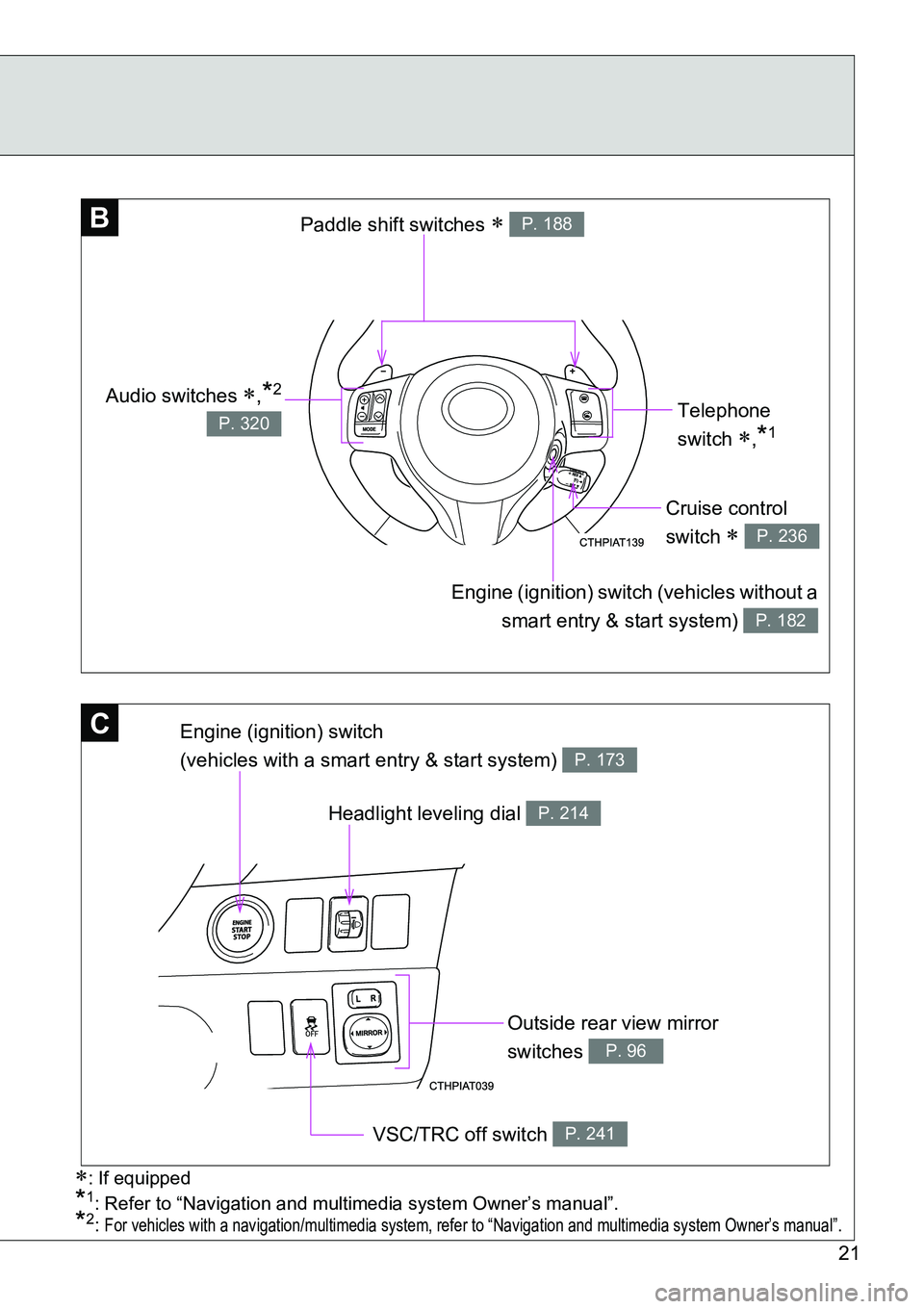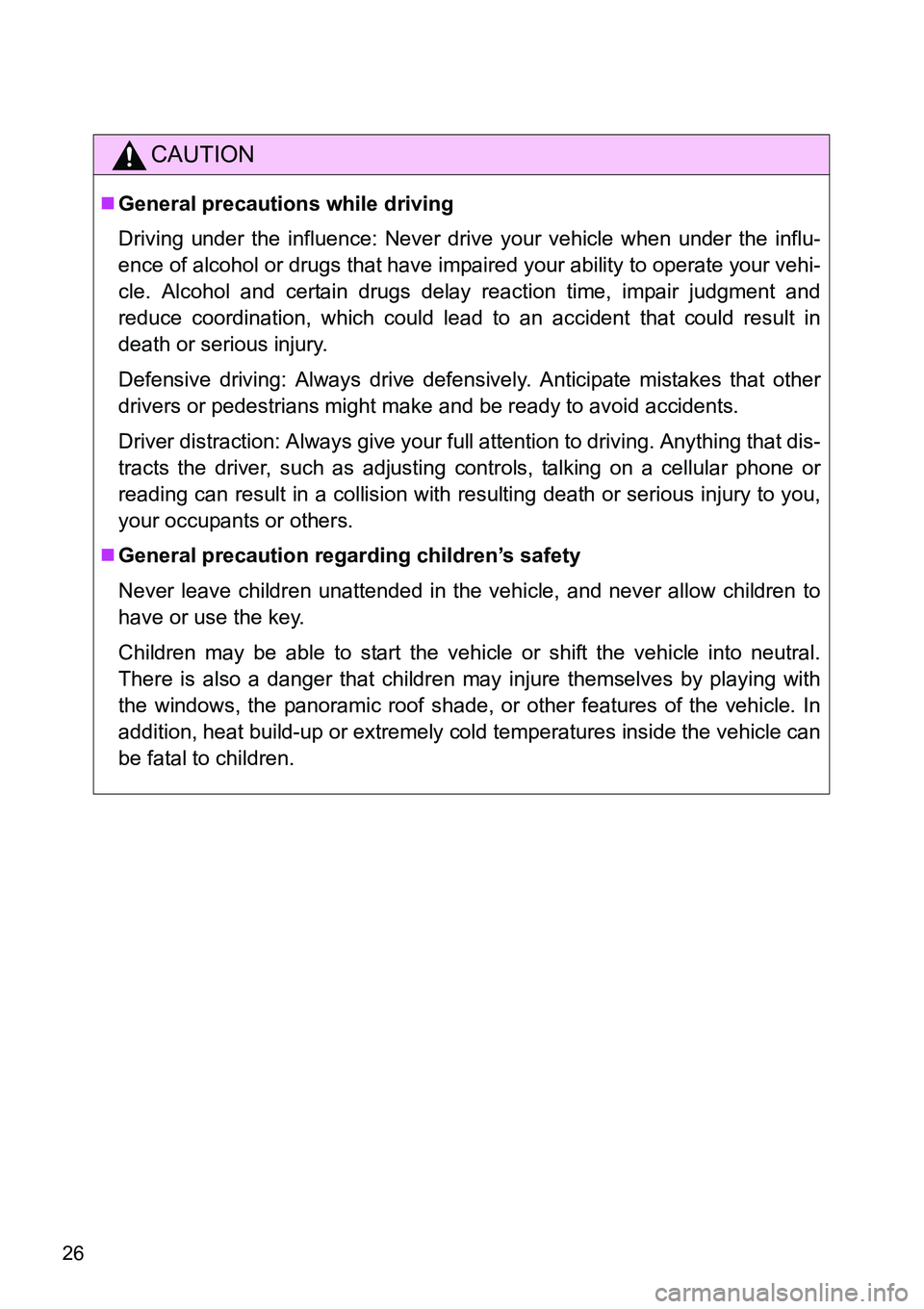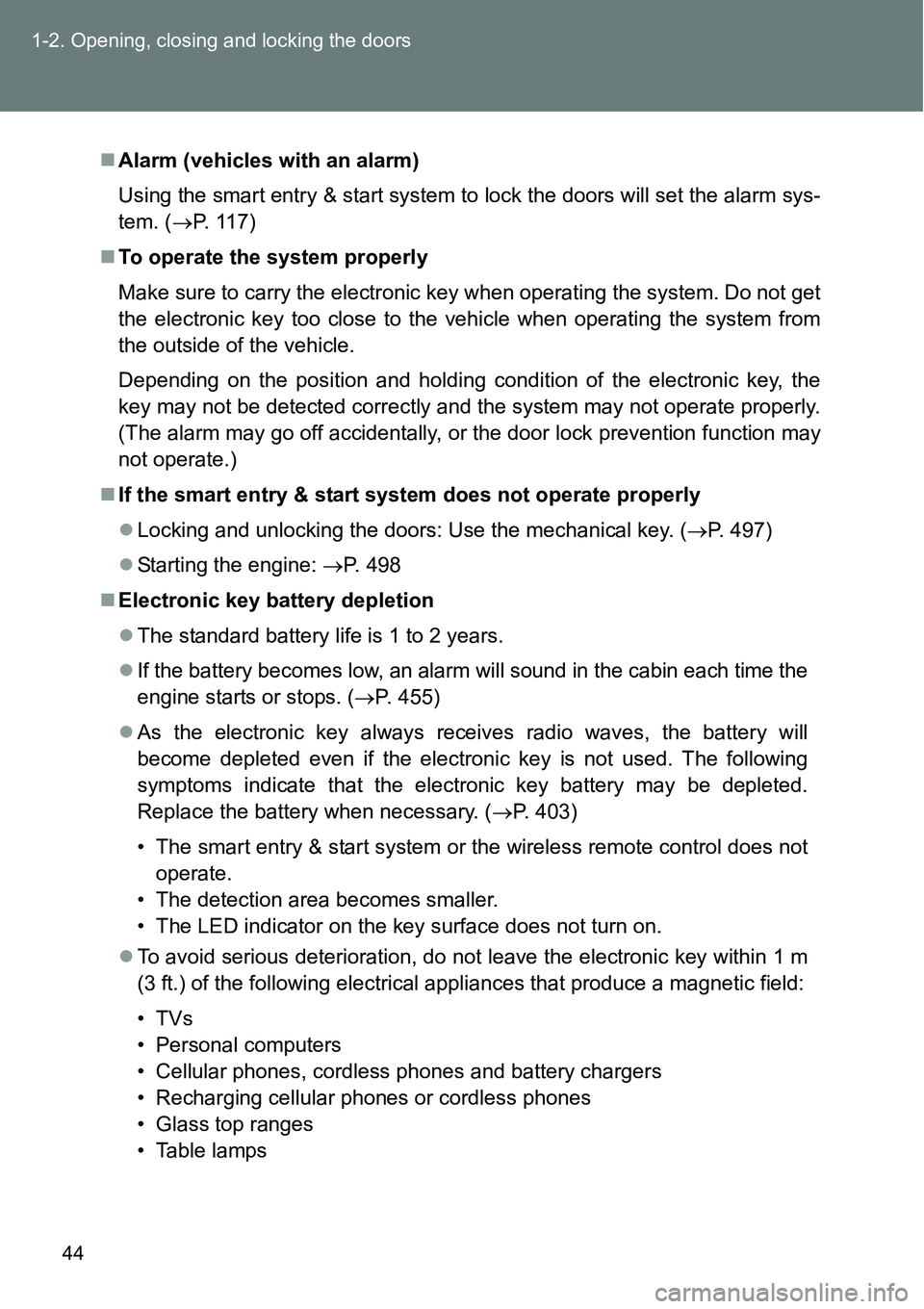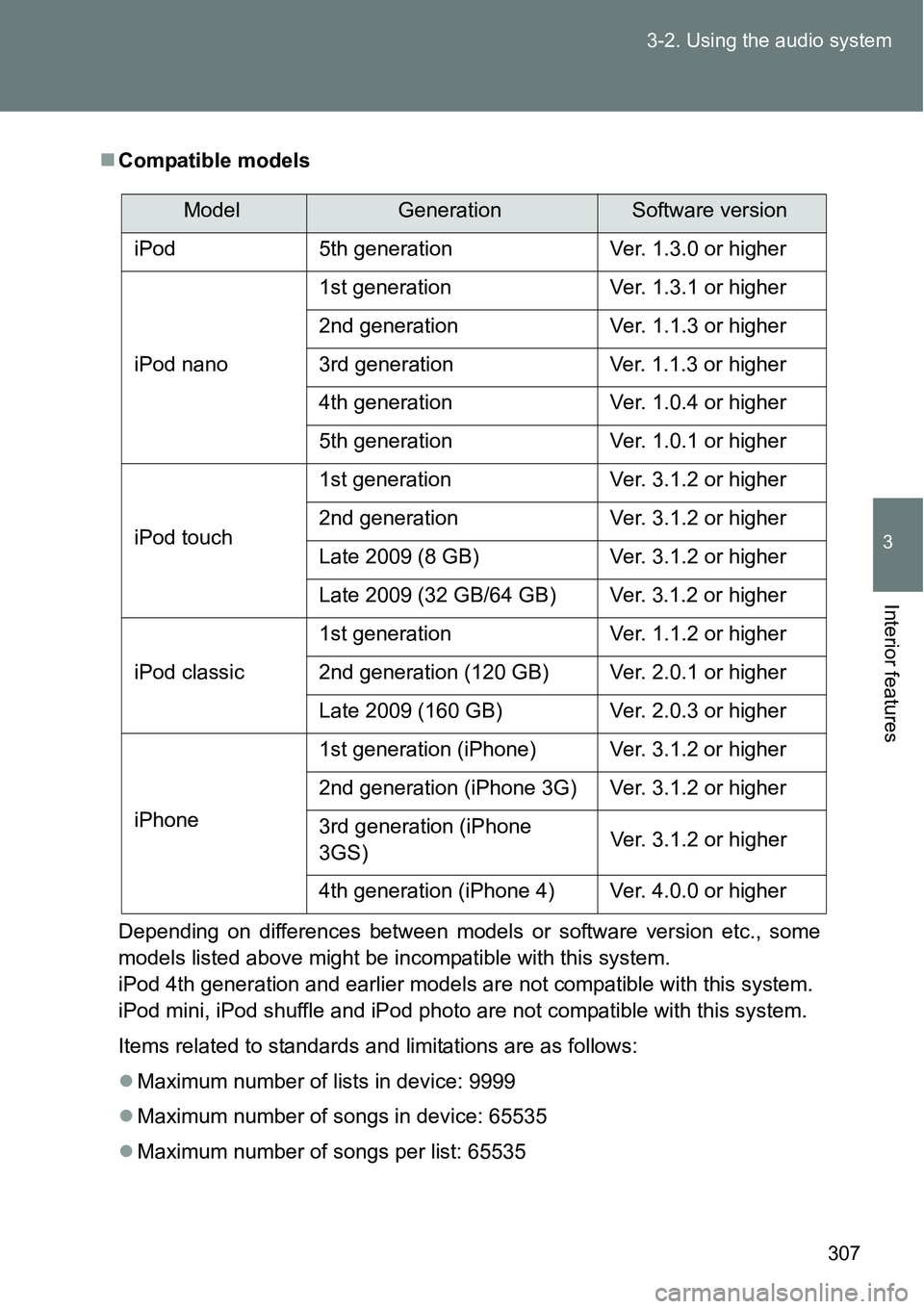2015 TOYOTA VERSO S phone
[x] Cancel search: phonePage 15 of 564

15
B
Telephone
switch
,*1
Engine (ignition) switch (vehicles without a
smart entry & start system)
P. 182
Paddle shift switches P. 188
Audio switches ,*2
P. 320
C
VSC/TRC off switch P. 241
Headlight leveling dial P. 214
Power heater switch P. 279
Outside rear view mirror switches P. 96
: If equipped
*1: Refer to “Navigation and multimedia system Owner’s manual”.
*2: For vehicles with a navigation/multimedia system, refer to “Navigation and multimedia system Owner’s manual”.
Cruise control
switch
P. 236
Page 21 of 564

21
B
Telephone
switch
,*1
Engine (ignition) switch (vehicles without a
smart entry & start system)
P. 182
Paddle shift switches P. 188
Audio switches ,*2
P. 320
C
Headlight leveling dial P. 214
Outside rear view mirror
switches
P. 96
VSC/TRC off switch P. 241
Engine (ignition) switch
(vehicles with a smart entry & start system)
P. 173
Cruise control
switch
P. 236
: If equipped
*1: Refer to “Navigation and multimedia system Owner’s manual”.
*2: For vehicles with a navigation/multimedia system, refer to “Navigation and multimedia system Owner’s manual”.
Page 26 of 564

26
CAUTION
General precautions while driving
Driving under the influence: Never drive your vehicle when under the influ-
ence of alcohol or drugs that have impaired your ability to operate your vehi-
cle. Alcohol and certain drugs delay reaction time, impair judgment and
reduce coordination, which could lead to an accident that could result in
death or serious injury.
Defensive driving: Always drive defensively. Anticipate mistakes that other
drivers or pedestrians might make and be ready to avoid accidents.
Driver distraction: Always give your full attention to driving. Anything that dis-
tracts the driver, such as adjusting controls, talking on a cellular phone or
reading can result in a collision with resulting death or serious injury to you,
your occupants or others.
General precaution regarding children’s safety
Never leave children unattended in the vehicle, and never allow children to
have or use the key.
Children may be able to start the vehicle or shift the vehicle into neutral.
There is also a danger that children may injure themselves by playing with
the windows, the panoramic roof shade, or other features of the vehicle. In
addition, heat build-up or extremely cold temperatures inside the vehicle can
be fatal to children.
Page 41 of 564

41 1-2. Opening, closing and locking the doors
1
Before driving
Conditions affecting operation
The smart entry & start system uses weak radio waves. In the following situ-
ations, the communication between the electronic key and the vehicle may
be affected, preventing the smart entry & start system, wireless remote con-
trol and engine immobilizer system from operating properly.
(Way of coping P. 497)
When the electronic key battery is depleted
Near a TV tower, electric power plant, gas station, radio station, large dis-
play, airport or other facility that generates strong radio waves or electri-
cal noise
When the electronic key is in contact with, or is covered by the following
metallic objects
• Cards to which aluminum foil is attached
• Cigarette boxes that have aluminum foil inside
• Metallic wallets or bags
• Coins
• Hand warmers made of metal
• Media such as CDs and DVDs
When other wireless key (that emit radio waves) is being used nearby
When carrying the electronic key together with the following devices that
emit radio waves
• A portable radio, cellular phone, cordless phone or other wireless com-
munication device
• Another vehicle's electronic key or a wireless key that emits radio
waves
• Personal computers or personal digital assistants (PDAs)
• Digital audio players
• Portable game systems
If window tint with a metallic content or metallic objects are attached to
the rear window
When the electronic key is placed near a battery charger or electronic
devices
Page 44 of 564

44 1-2. Opening, closing and locking the doors
Alarm (vehicles with an alarm)
Using the smart entry & start system to lock the doors will set the alarm sys-
tem. (P. 117)
To operate the system properly
Make sure to carry the electronic key when operating the system. Do not get
the electronic key too close to the vehicle when operating the system from
the outside of the vehicle.
Depending on the position and holding condition of the electronic key, the
key may not be detected correctly and the system may not operate properly.
(The alarm may go off accidentally, or the door lock prevention function may
not operate.)
If the smart entry & start system does not operate properly
Locking and unlocking the doors: Use the mechanical key. (P. 497)
Starting the engine: P. 498
Electronic key battery depletion
The standard battery life is 1 to 2 years.
If the battery becomes low, an alarm will sound in the cabin each time the
engine starts or stops. (P. 455)
As the electronic key always receives radio waves, the battery will
become depleted even if the electronic key is not used. The following
symptoms indicate that the electronic key battery may be depleted.
Replace the battery when necessary. (P. 403)
• The smart entry & start system or the wireless remote control does not
operate.
• The detection area becomes smaller.
• The LED indicator on the key surface does not turn on.
To avoid serious deterioration, do not leave the electronic key within 1 m
(3 ft.) of the following electrical appliances that produce a magnetic field:
•TVs
• Personal computers
• Cellular phones, cordless phones and battery chargers
• Recharging cellular phones or cordless phones
• Glass top ranges
• Table lamps
Page 58 of 564

58 1-2. Opening, closing and locking the doors
Security feature
If a door is not opened within approximately 30 seconds after the vehicle is
unlocked, the security feature automatically locks the vehicle again.
Alarm (vehicles with an alarm)
Using the wireless remote control to lock the doors will set the alarm system.
(P. 1 1 7 )
Conditions affecting operation
Vehicles without a smart entry & start system
The wireless remote control function may not operate normally in the follow-
ing situations:
When the wireless key battery is depleted
Near a TV tower, electric power plant, gas station, radio station, large dis-
play, airport or other facility that generates strong radio waves or electri-
cal noise
When carrying a portable radio, cellular phone or other wireless commu-
nication devices
When the wireless key is in contact with, or is covered by a metallic
object
When other wireless key (that emit radio waves) is being used nearby
If window tint with a metallic content or metallic objects are attached to
the rear window
Vehicles with a smart entry & start system
P. 4 1
If the wireless remote control does not operate properly (vehicles with
a smart entry & start system)
Locking and unlocking the doors: Use the mechanical key. (P. 497)
Key battery depletion
Vehicles without a smart entry & start system
If the wireless remote control function does not operate, the battery may be
depleted. Replace the battery when necessary. (P. 403)
Vehicles with a smart entry & start system
P. 4 4
Page 307 of 564

307 3-2. Using the audio system
3
Interior features
Compatible models
Depending on differences between models or software version etc., some
models listed above might be incompatible with this system.
iPod 4th generation and earlier models are not compatible with this system.
iPod mini, iPod shuffle and iPod photo are not compatible with this system.
Items related to standards and limitations are as follows:
Maximum number of lists in device: 9999
Maximum number of songs in device: 65535
Maximum number of songs per list: 65535
ModelGenerationSoftware version
iPod 5th generation Ver. 1.3.0 or higher
iPod nano1st generation Ver. 1.3.1 or higher
2nd generation Ver. 1.1.3 or higher
3rd generation Ver. 1.1.3 or higher
4th generation Ver. 1.0.4 or higher
5th generation Ver. 1.0.1 or higher
iPod touch1st generation Ver. 3.1.2 or higher
2nd generation Ver. 3.1.2 or higher
Late 2009 (8 GB) Ver. 3.1.2 or higher
Late 2009 (32 GB/64 GB) Ver. 3.1.2 or higher
iPod classic1st generation Ver. 1.1.2 or higher
2nd generation (120 GB) Ver. 2.0.1 or higher
Late 2009 (160 GB) Ver. 2.0.3 or higher
iPhone1st generation (iPhone) Ver. 3.1.2 or higher
2nd generation (iPhone 3G) Ver. 3.1.2 or higher
3rd generation (iPhone
3GS)Ver. 3.1.2 or higher
4th generation (iPhone 4) Ver. 4.0.0 or higher
Page 548 of 564

548 Alphabetical index
Back door ................................... 72
Back-up light
Replacing light bulbs ............. 423
Wattage................................. 536
Battery
Checking ............................... 378
If the vehicle has a
discharged battery .............. 501
Preparing and checking
before winter ....................... 250
Bluetooth
® audio*
Bluetooth® phone*
Bottle holders........................... 329
Brake
Parking brake ........................ 196
Brake assist.............................. 240
Break-in tips ............................. 162Camera*
Care
Exterior ................................. 354
Interior................................... 358
Seat belts .............................. 359
Cargo hooks............................. 347
CD player .................................. 289
Chains....................................... 250
Child-protectors......................... 68
Child restraint system
Baby seats, definition............ 136
Baby seats, installation ......... 145
Child seats, definition............ 136
Child seats, installation ......... 145
Installing CRS with ISOFIX
rigid anchor......................... 150
Installing CRS with seat
belts .................................... 146
Installing CRS with top
straps.................................. 151
Junior seats, definition .......... 136
Junior seats, installation ....... 145
BC